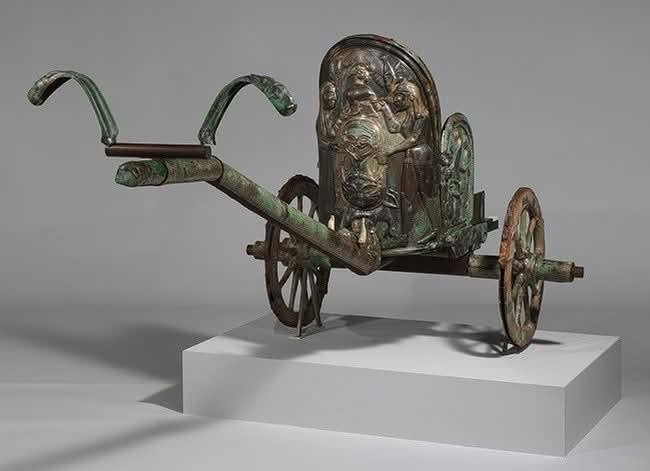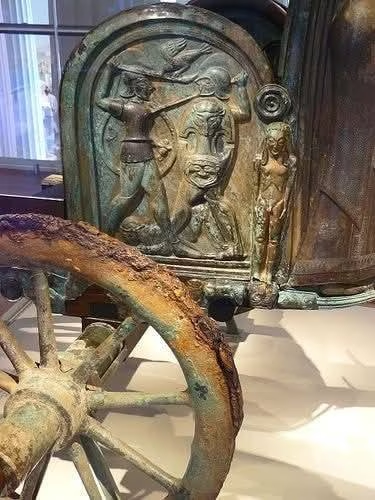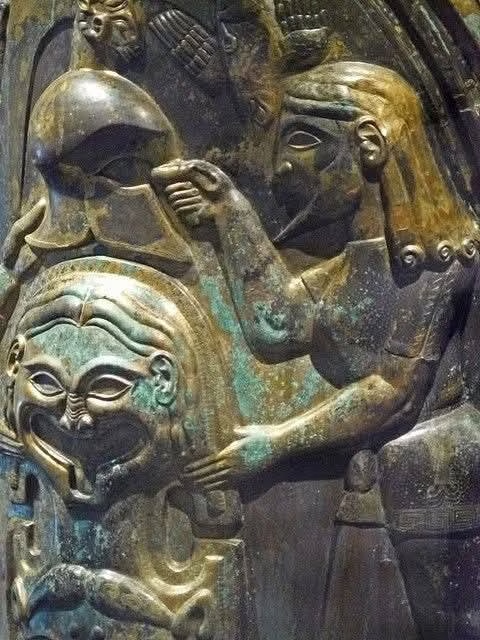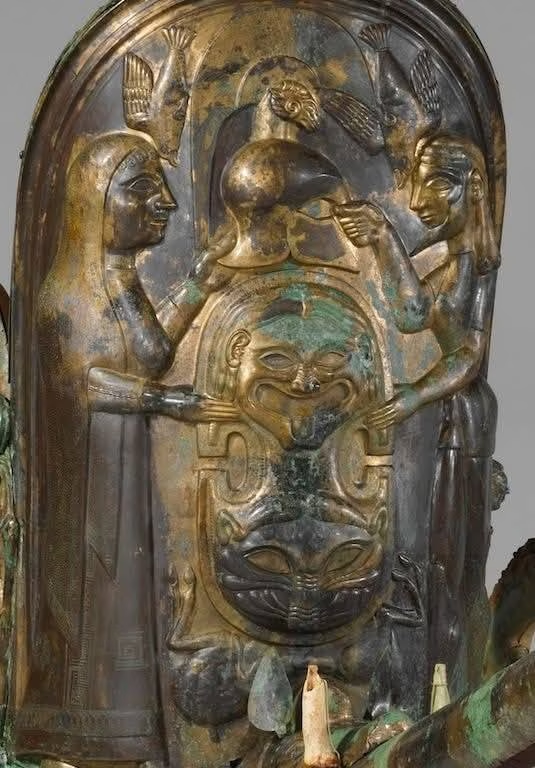What began as a humble quest for roof tiles ended up uncovering one of the most magnificent artifacts of the ancient world. The Monteleone Chariot, now housed in the Metropolitan Museum of Art in New York, is not only a masterpiece of Etruscan craftsmanship, but also a story of chance, trade, and rediscovery.
Discovered by Chance, Preserved by Fortune
In 1902, near the village of Monteleone di Spoleto in the Umbria region of central Italy, a shepherd named Isidoro Vannozzi stumbled upon an ancient tomb while preparing the foundation for his farmhouse. Inside, he found a collection of bronze, ceramic, and iron artifacts—among them, a remarkably preserved two-wheeled ceremonial chariot.

Unaware of the artifact’s true historical value and in need of roofing tiles for his home, Vannozzi reportedly sold the chariot to a local scrap dealer named Benedetto Petrangeli. According to other accounts, fearing government confiscation, he hid the chariot in his barn and later traded it to two Frenchmen in exchange for two cows.
After changing hands several times, the chariot eventually made its way to Paris, where it was acquired by the American banker and financier J.P. Morgan. In 1903, it was shipped to the United States and underwent its first major restoration at the Metropolitan Museum of Art, where it remains on display today.
An Icon of Etruscan Art and Ritual
The Monteleone Chariot represents a pinnacle of Etruscan metalwork and religious symbolism. Designed to be drawn by two horses, the chariot stands 131 cm high and features a wooden frame overlaid with intricately detailed bronze panels.

These panels illustrate scenes from the life of Achilles, the Greek hero of Homeric legend. The central panel depicts Thetis, Achilles’ mother, presenting her son with a divine helmet and shield. On the left panel, Achilles engages in battle—possibly with the Trojan warrior Memnon. The right panel shows Achilles being deified, ascending in a chariot drawn by winged horses.

The body of the chariot is further adorned with images of animals and mythological creatures, showcasing the Etruscans’ exceptional artistic detail and mythological knowledge.
A Unique Survivor of the Ancient World
Used in religious ceremonies and public processions, such chariots were more than transportation—they were symbols of status, power, and divine favor. Among all surviving examples of Etruscan ceremonial vehicles, the Monteleone Chariot is the most complete and best-preserved.

In the mid-20th century, a full-scale replica of the chariot was built and displayed in its town of origin, Monteleone di Spoleto, honoring both the artifact and the shepherd whose modest needs led to an extraordinary archaeological discovery.
The images used in this article are courtesy of the Metropolitan Museum of Art.





